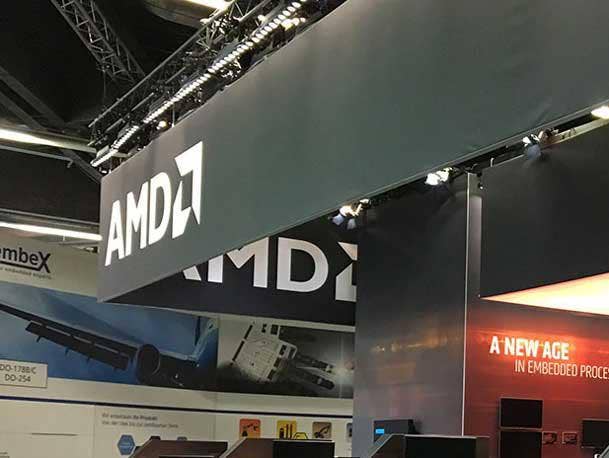AMD Caps 2022 With Nearly 30 Percent CPU Share Against Intel
While AMD grew overall x86 CPU market share against Intel in last year’s fourth quarter, the chip designer’s gains in the server space slowed to a crawl after 14 consecutive quarters of growth in the segment.

AMD finished last year with nearly 30 percent share against Intel in the x86 CPU market amid a historic slump in demand for PCs that dragged down revenues for both companies.
The latest market share numbers from Arizona-based firm Mercury Research showed that AMD’s x86 share for total CPU shipments in 2022 was 29.6 percent versus Intel’s 70.4 percent. This represented a significant swing from the prior year when AMD held 23.3 percent against Intel’s 76.7 percent.
While AMD’s x86 share reached nearly 30 percent for all of last year, the chip designer’s portion of shipments in the fourth quarter of 2022 swung higher, to 31.3 percent, versus Intel’s 71.5 percent. That amounted to a 5.7-point year-over-year increase and a 2.8-point increase from the previous quarter.
Dean McCarron, head of Mercury Research, noted that CPU share movements in the past few quarters were more representative of what AMD and Intel are shipping to OEMs, cloud providers, retailers and channel partners rather than what customers are buying from these intermediaries.
This dynamic is happening due to a significant downturn in demand for chips that has resulted in direct buyers such as OEMs putting a priority on selling excess CPU inventory rather than buying more silicon from Intel and AMD, according to McCarron. For this reason, he doesn’t expect the quarterly market share numbers to accurately reflect the sentiment of end customers until late 2023.
“Most of the downturn in shipments is blamed on excess inventory shipping in prior quarters impacting current sales — the CPU suppliers are also deliberately limiting shipments to help increase the rate of inventory consumption,” McCarron wrote. “Additionally, PC demand for processors is lower, and weakening macroeconomic concerns is driving PC OEMs to reduce their inventory as well.”
However, the analyst added, AMD’s total shipments in 2022 better reflected “legitimate share gains rather than inventory movement.”
How AMD Grew Share Against Intel In Q4 2022
In last year’s fourth quarter, AMD saw its most significant quarterly share movement in the desktop CPU space, where it grew to 18.6 percent against Intel’s 81.4 percent. That represented a 4.7-point increase from the previous quarter and 2.4-point increase from the same period last year. (The desktop market also includes Taiwanese chip supplier Via, but its footprint is so small that its share rounds to zero.)
“Desktop processor shipments were down significantly after the large boost in the third quarter. This is likely due to Intel’s price increases driving pull-in of sales into the third quarter followed by a steep decline in the fourth quarter,” McCarron wrote.
“While both Intel and AMD saw much lower desktop CPU shipments, Intel’s fell significantly more, resulting in AMD gaining share in a shrinking market — but again, this is reflecting changes in Intel’s inventory position more than end demand,” he added.
In the laptop CPU space, AMD gained quarterly share again Intel, albeit at a much slower clip, growing 0.8 points to 16.4 percent versus Intel’s 83.6 percent. However, AMD’s latest share position for notebook processors was a 5.1-point decline from the same period in 2021.
McCarron said AMD’s quarterly share gain with mobile CPUs was largely the result of Intel experiencing a steeper decline in shipments compared to its rival. AMD’s steep drop from the previous year, on the other hand, reflected the chip designer shipping far fewer low-end CPUs for Chromebooks, he added.
It was in the server CPU market where AMD barely grew share sequentially against Intel after 14 consecutive quarters of share growth in the segment. For the fourth quarter, AMD grew by 0.1 points from the previous quarter to 17.6 percent against Intel’s 82.4 percent, which McCarron said was the “smallest server share move in nearly four years.” In comparison to the same period in 2021, however, AMD’s share for the quarter represented an increase of 6.9 points.
What contributed to AMD’s slowdown in quarterly share gains was a boost in shipments of Intel’s network-optimized Xeon CPUs as well as its Xeon Max Series chips that come with high-memory bandwidth for high-performance computing applications, according to McCarron.
One solution provider executive told CRN that demand between AMD- and Intel-based PCs in the fourth quarter last year was “steady,” though his customers were still “slightly favoring” AMD’s Ryzen 9 7900X processors over Intel’s Core i9-13900 models.
“I wouldn’t say AMD is gaining ground as quickly as they did over the past couple of years, but Intel is certainly still hanging in with gamers and architects,” said Randy Copeland, CEO of Velocity Micro, a Richmond, Va.-based PC system builder.